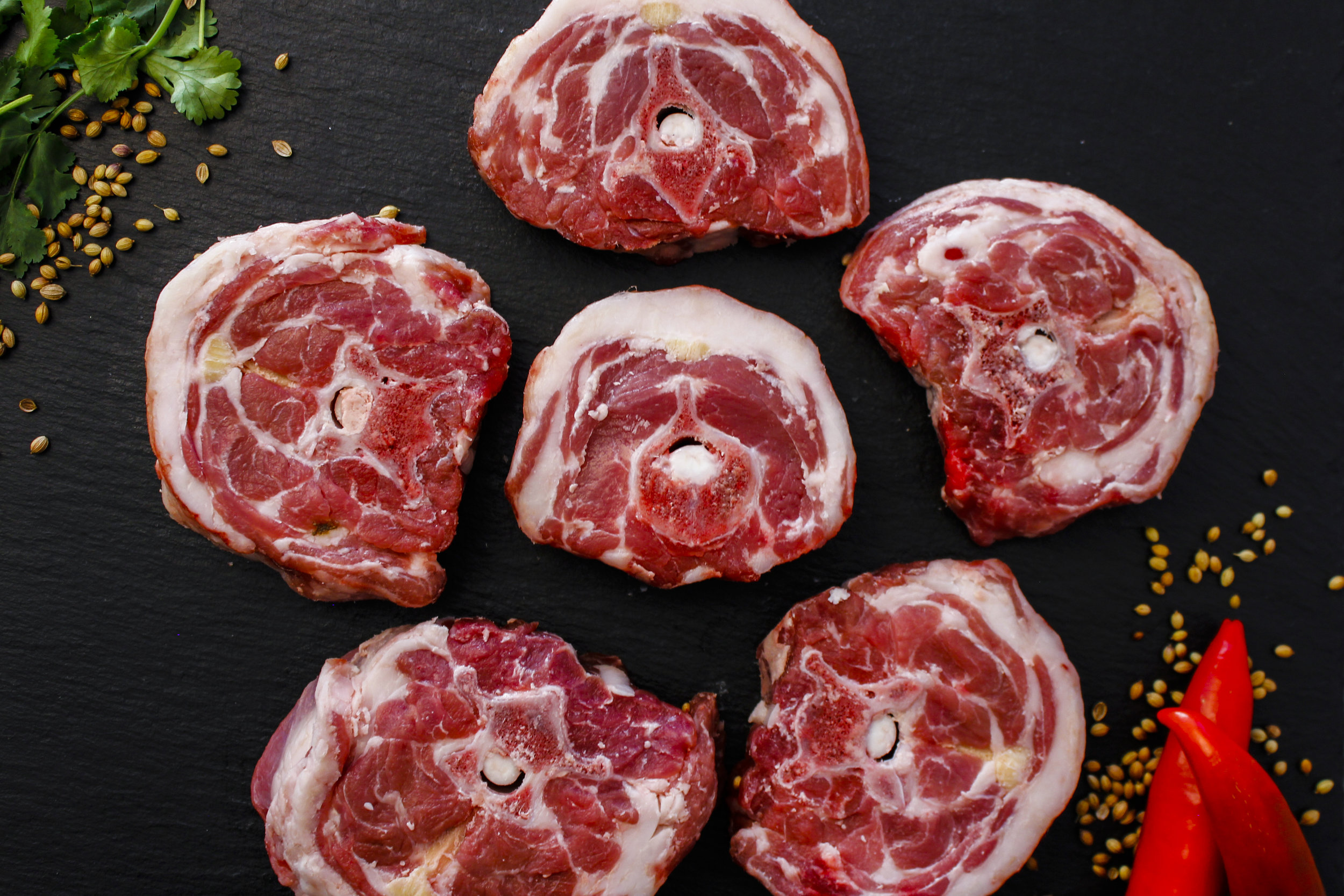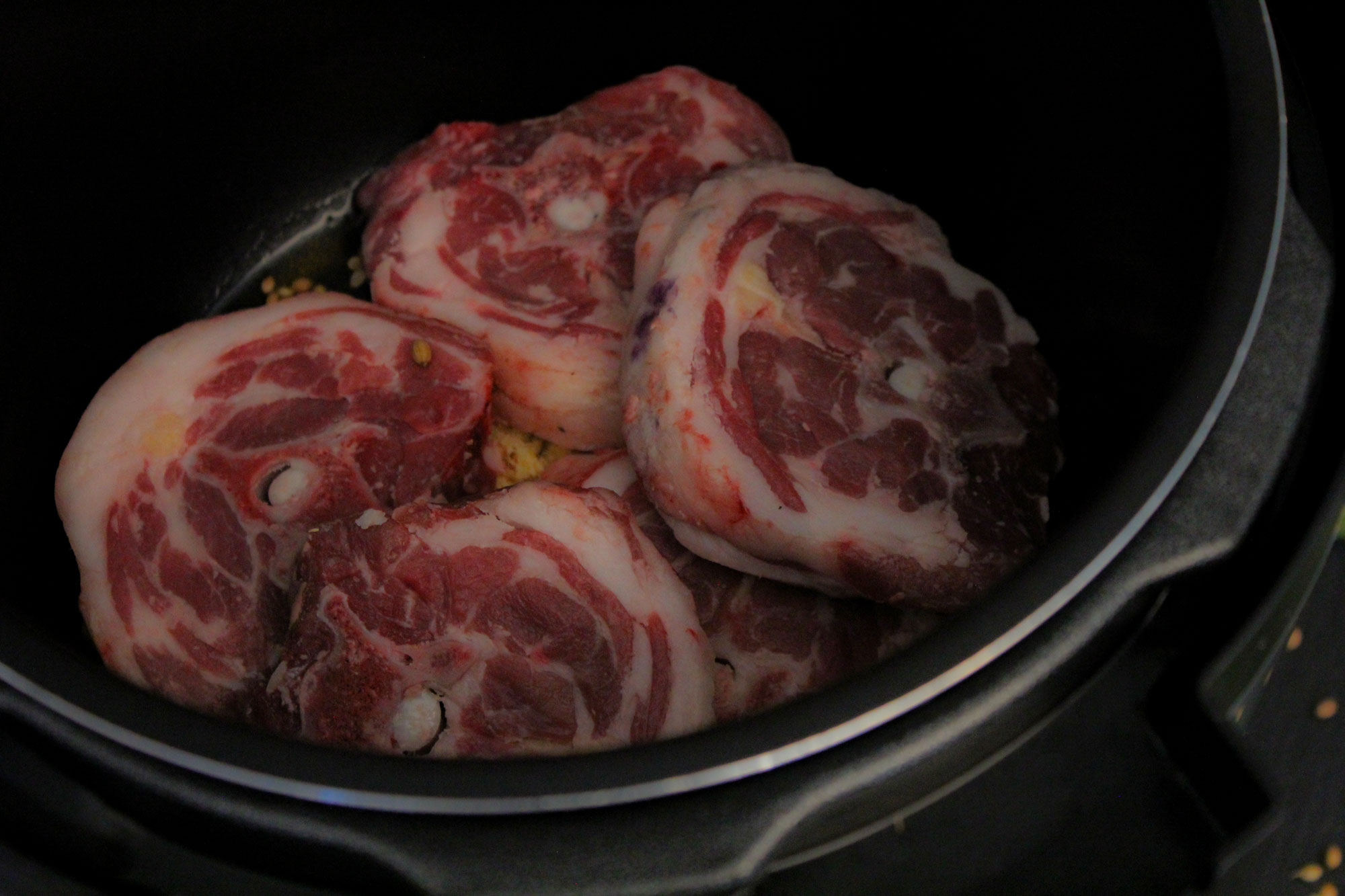Skaapstertjies. Ek gaan nie vir jul jok nie, die eerste keer toe iemand vir my ‘n skaapstertjie aangebied het, het ek hierdie vreemde storie maar baie versigtig benader. As stadskind het ek nie grootgeword met hierdie lekkerny op die spyskaart nie (het ek ooit geweet ‘n skaap se stert is eetbaar?). Nou is skaapstertjies hoog op die lys van my gunsteling kosse, solank dit reg gaargemaak is natuurlik!
Die twee belangrikste dinge om te verstaan as dit by skaapstertjies kom is dat dit ‘n stukkie vleis is wat bietjie voorafbereiding verg en dat dit definitief nie in die nuutste verslankingsdieet gaan verskyn nie! Maar dit beteken nie dit steek af by ander snitte nie, en is ook glad nie soveel moeite as jy dit nou en dan vir ‘n spesiale geleentheid maak nie. Dis eintlik so eenvoudig soos ‘n pot kokende water op die stoof! Party mense stel voor mens kook die stertjies in soutwater omdat die temperatuur van die water dan hoër is, waar ander weer ‘n goeie ou stoompot verkies. Ek persoonlik is bietjie versigtig vir ‘n stoompot en het nog nie ‘n elektriese stoompot in my trousseaukis nie, daarom verkies ek ‘n pot met kookwater op die stoof. Dit vat so 90min vir skaapstertjies om sag te kook, en as dit wegtrek van die beentjie af is dit reg om uit te die water, en op die kole te kom. Dit was Oom Francois (Floors) Botha van die Vrystaat se skaapstertjies wat my guns die eerste keer gewen het. Oom Floors het hierdie jaar by die Bloem Skou groot naamgemaak met sy skaapstertjies wat hy sorgvuldig by die huis gedokter het voor hy dit by die skou kom braai het. Volgens hom lê die sukses van ‘n stertjie nie net in die “pre-cooking” nie, maar ook in sy sous. Nie noodwendig die tipe sous wat jy by die stertjie sit nie, maar meer die tydsberekening van die sous se byvoeging. Oom Floors vertel my hy het per toeval uitgevind het, toe hy haastig ‘n hele klomp stertjies moes voorberei, dat dit goed werk om die vuurwarm stertjies wat uit die stoompot of kookwater kom direk in die sous te sit en net so te vries. Dis asof die warm stertjies die sous opsuig en dit dan goed behou as dit weer ontvries en gebraai word.
Skaapstertjies is ook glad nie ‘n vreemde gereg vir Noord-Kapenaars nie. Hier het ek by die “Williston Mall” se restaurant heerlike Karusaf skaapstertjies geëet. Hierdie heerlike karoo skaapstertjies was goed vooraf saggekook en toe net oor die vuur gebraai totdat die buitekant lekker krakerig was, met net sout en peper oor, sodat mens nog die heerlike geur wat eie is aan skaapvleis uit die karoo kon proe. Daar was ook groot feesgevier met skaapstertjies by hierdie jaar se Hantam Vleisfees in Calvinia. Al was daar 4 verskillende stalletjies wat skaapstertjies gebraai en verkoop het, was daar nie ‘n enkele skaapstertjie oor in Calvinia na 2uur die middag nie. Skaapstertjies is verseker die gunsteling “feeskos” op die platteland, wat maklik in die loop geniet kan word deur oud en jonk!
Na my besoek aan die Noord Kaap was ek baie hartseer dat stadskinders so moet uitmis op een van die lekkerste bederfies wat uit ‘n skaapkarkas kom. Ek het bietjie gaan ondersoek instel oor waar mens skaapstertjies in die stad kan kry. Dit is nie sommer ‘n produk wat op ‘n supermark, of selfs ‘n stadslaghuis, se rak lê nie so ek moes lank soek voor ek by die manne van “KLH Oos-Kaap Lam” uitgekom het deur hul sosiale media blad. Hierdie manne het as studente agtergekom die aanvraag vir “die 5de kwart” in die stad is genoeg om goeie besigheid mee te maak, maar die produkte is nie naastenby so maklik bekombaar soos in die platteland nie. Hul het hierdie geleentheid aangegryp en met ‘n waentjie die langpad aangepak en by ‘n paar kontakte by abattoirs skaapafval, skaapstertjies, beesstert en beestong aangekoop. Die stadsjapies het hierdie produkte soos soetkoek opgeraap en hierdie manne bedryf jare later steeds deeltyds hul 5de kwart besigheid in die stad vanaf hul Facebook blad.
Ek dink dit is net ‘n kwessie van tyd voor die “food market” kultuur in die stad skaapstertjies beetkry, tot dan lyk dit my skaapstertjies is een van die beste geheime wat die platteland inhou!
















